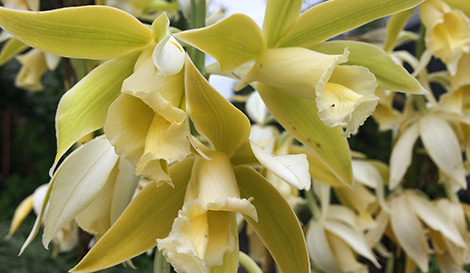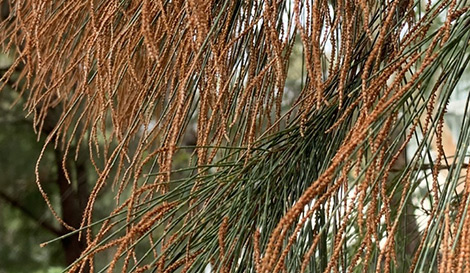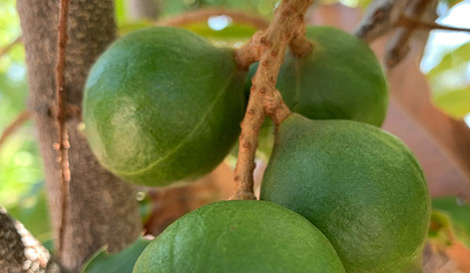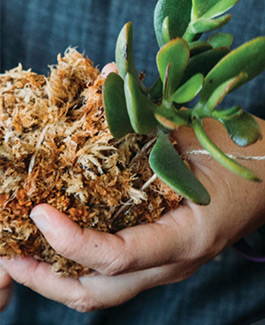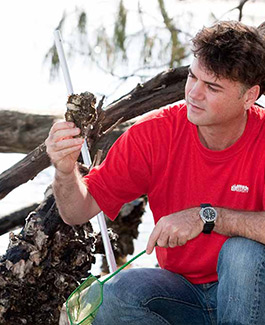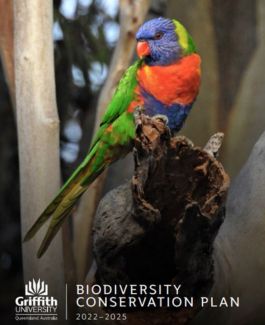Discover our natural environment. Our campuses play host to a number of natural environments, and play a crucial role in maintaining biodiversity in South-East Queensland.
Griffith University has been working to document the variety of living things that call our campuses home. As a result over 1800 species have been recorded, making Griffith’s three main campuses key biodiversity hotspots in rapidly urbanizing cities and among the most diverse campuses globally. The University has committed to the United Nation's 17 Sustainable Development Goals, with the forests, gardens and wetlands on our campuses contributing to:
- SDG15 “Life on Land” by supporting biodiversity,
- SDG3 “Good Health” through mental and physical health benefits from working and studying in nature,
- SDG4 “Quality Education” through use of the campuses as living laboratories,
- SDG11 “Making cities and human settlements inclusive, safe, resilient and sustainable” by promoting green solutions in cities, and
- SDG13 “Climate Action” by promoting increased vegetation cover and via sequestering and storing carbon in trees on our campuses.
Our interactive maps of the three campuses provide visitors, students and staff with a virtual tour of the University's natural heritage; our biodiversity, and what we are doing to celebrate, maintain and enhance it. This website also includes a range of other resources including detailed species lists for each campus and ecological reports. Come take a look.
Sustainable Development Goals
Griffith University is aligned to the United Nation's Sustainable Development Goals (SDGs) and is committed to preserving life below water and life on land, working to protect marine ecosystems and terrestrial biodiversity, ensuring a sustainable and biodiverse future for all.
First Nations
Griffith University believes strongly within its core values our position as stewards maintaining the remarkable co-management and environmental sustainability Aboriginal people engineered as traditional farming practices over tens of thousands of years within each of our individual campuses: Brisbane City (Southbank), Brisbane South (Nathan), Brisbane South (Mt Gravatt), Logan, and Gold Coast. Aboriginal people co-existing within the natural heritage in cultivating the landscape via complex kinship systems as to make those resources abundant in building a thriving ecological system of biodiversity within each campus.
We now have a responsibility as Griffith University to protect, restore and enhance this biodiversity within each individual campus and ecosystems to protect these significant conservation values in appreciation of the resources provided by Aboriginal people, and protect not only the beautiful environment, but the world view we have inherited well into the future. This wealth of natural heritage embedded within Aboriginal knowledges also provides many opportunities for promoting appreciation of biodiversity values and conservation to staff, students, and the broader community as well as strong collaborative partnerships in conservation and sustainability with a range of stakeholders, e.g., local and state government, community organisations and industry partners and most importantly traditional Aboriginal knowledge keepers.
This website may contain the names and images of Aboriginal and Torres Strait Islander people now deceased. It also contains links to sites that may use images of Aboriginal and Torres Strait Islander people now deceased.
Gold Coast Resources
Situated in the coastal lowlands of South East Queensland, Griffith University's Gold Coast campus contains important remnant ecosystems as well as beautiful displays of native plants across the gardens illustrating the power of green solutions for cities.
There are more than 577 species of plants on campus of which 223 are native to the swamp paperbark wetlands and endangered blackbutt forest, while 223 native species/cultivars are grown across more than 10 ha of gardens including 22 species of threatened plants. Across the whole campus over 129 species of birds, mammals, frogs and reptiles can be found along with numerous freshwater and terrestrial invertebrates. This includes five species of threatened animals including Koala and Glossy Black Cockatoo, and three of concern.
Brisbane South (Nathan) Resources
Situated in the dry eucalyptus forest typical of ridges and hills in South East Queensland, Brisbane South (Nathan) is nestled amongst the natural ecosystems of the Toohey Forest Park.
The forested campus contains over 630 species of plants of which 457 are native to the site. Within this rich forest environment, 115 bird, 25 mammal, 10 frog and 26 reptile species and numerous freshwater and terrestrial invertebrates make a home. The native ecosystems that exist on this campus are astounding and are a testament to the many people who have fought hard over decades to protect the Toohey Forest area of outstanding natural beauty for the future.
Brisbane South (Nathan) Species (XLSX)
BioCondition Report Brisbane South (Nathan)
Field Based Forest Carbon Assessment Brisbane South (Nathan)
Logan Resources
Situated in cleared remnants of an old dairy farm in Meadowbrook, Griffith University's Logan campus is at first, seemingly a green desert compared to the rich forests and landscaping of the Gold Coast and Nathan campuses.
The campus however may surprise you in that it contains over 300 species of plants of which around 230 are native. Within this relatively rich floristic environment of landscaped areas, open fields, lakes, bush tucker garden and a native arboretum there are over 90 bird, 6 mammal, 4 frog and 12 reptile species with many more to be discovered as the forests, gardens and wetlands grow.
Field Based Forest Carbon Logan
Biodiversity books produced by Griffith University
Campus flow-through
Take a virtual tour of the biodiversity values of the Logan campus. Learn about our brand new arboretum, the rehabilitation of Slacks Creek with Logan City Council, the Logan LEAF Festival, the importance of urban lakes and wetlands, carbon sequestration projects and an ancient Macadamia tree older than the campus itself!
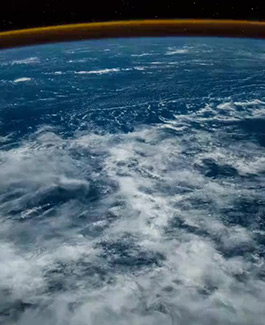
Climate Action
Griffith’s Climate Action Beacon seeks to develop the knowledge, leadership, capacity and responses to enable effective and just climate action throughout society.
Latest news
Floating algae a raft for juvenile pelagic fish
29 Jan 2024
Floating macroalgal acts as a raft that provides habitat for a diverse array of juvenile oceanic...
Protecting high value water sources in central Queensland
17 Jan 2024
Griffith University researchers are taking a novel approach to understanding and protecting water...
Translating global theories of change into tangible steps for conservation of...
29 Nov 2023
Developing a framework for global ‘theories of change’ that coordinate local and global actions to...
Living within safe & just Earth System Boundaries for blue water
29 Nov 2023
Can basic human water needs be met without exceeding safe and just Earth System Boundaries (ESB)...
Get in touch
Do you have an idea that you'd like to share with our Biodiversity Action Group? Like to get involved in our Bioblitz?
